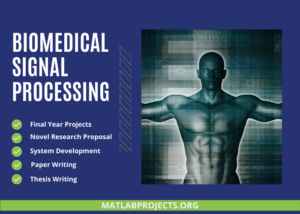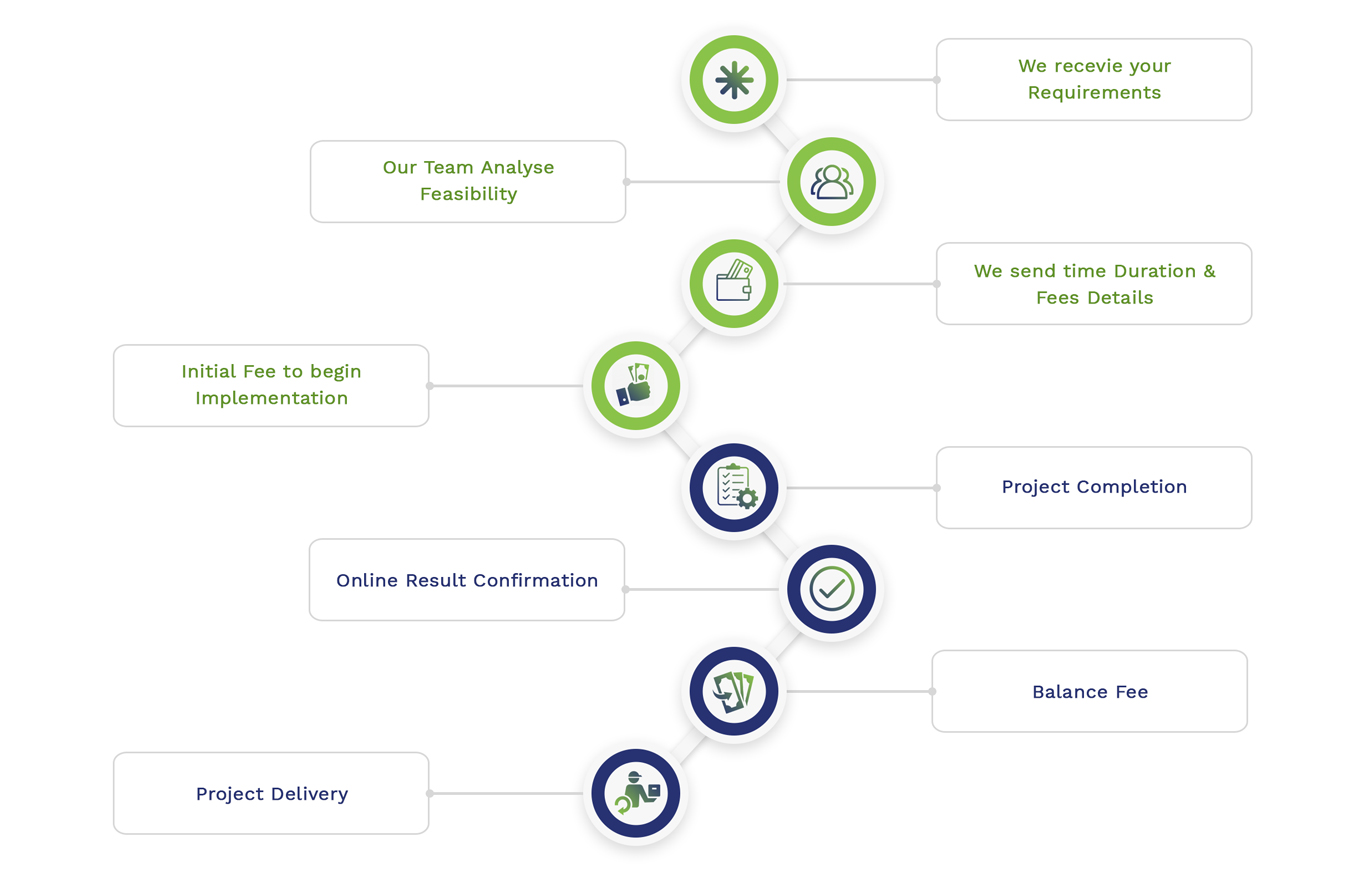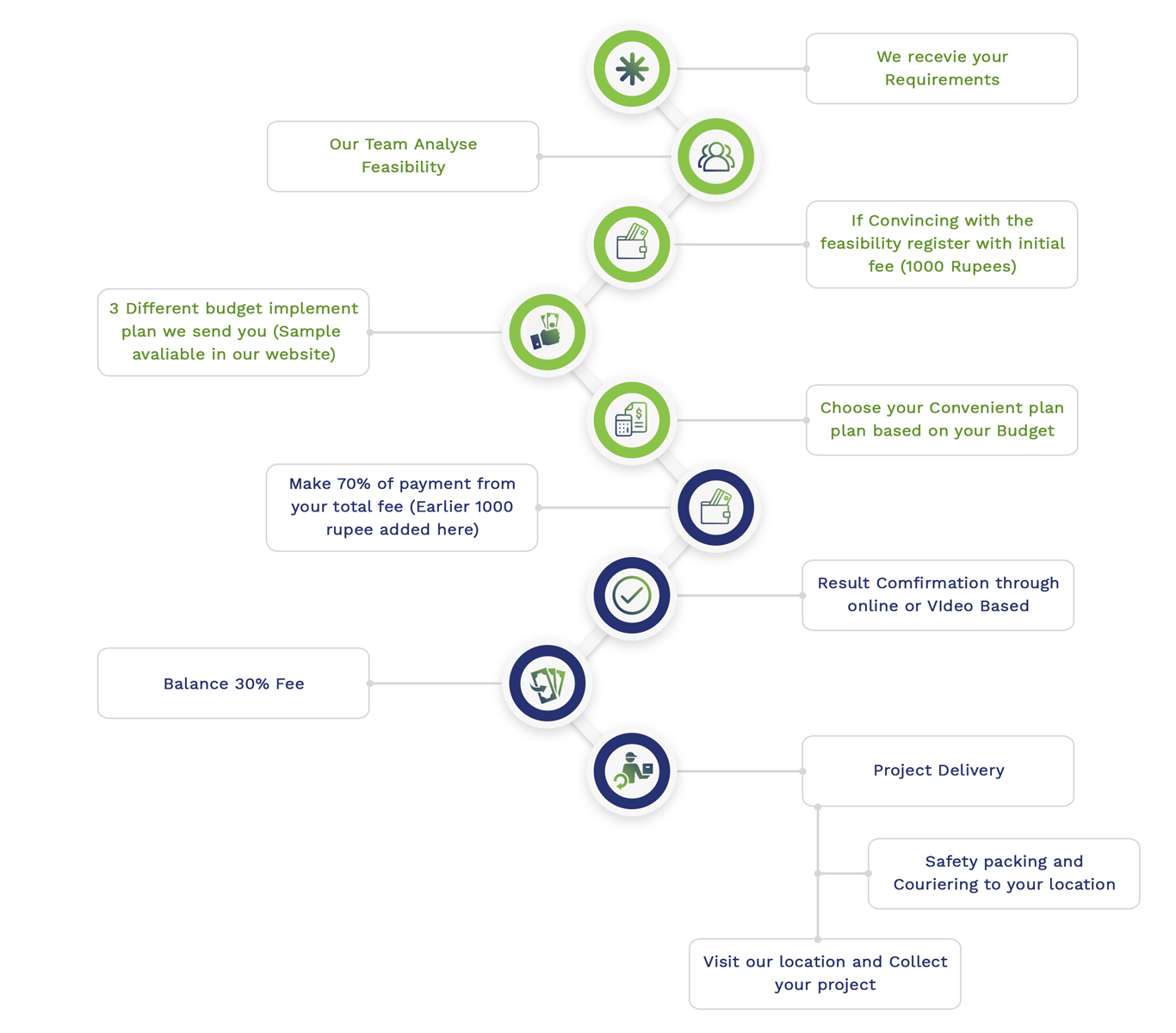Biomedical signal processing topics are one of the trending research topics in today’s world. Biomedical signals are the changes observed in the electric potential of a cell or tissue, or organ. The biomedical or bioelectrical signals are a combination of many signals, as given below.
- Bio impedance signals
- Biochemical signals
- Bioelectric signals
- Biomagnetic signals
- Biooptical signals
- Bioacoustic signals
The following is a brief understanding of biomedical signal processing. Our experts give this brief note on biomedical research for your reference. Let us first start with the applications of biomedical signal processing.
BIOMEDICAL SIGNAL PROCESSING APPLICATIONS
As the name suggests, biomedical signals give detailed information about the human body and its internal organs. Specifically, applications of biomedical signal processing can be listed below
- Analysis of EOG and EMG
- Analyzing audio signals
- Emotion recognition
- Analyzing tumor cells
- Digital histopathology
- Periodic movement of limb detection
- Speech recognition
- Characterizing tissues and cells
- Modeling of biometrics
- Gait analysis
- Speaker recognition
- Analysis of pathological voice
For performing these above biomedical signal processing applications, there are a wide variety of devices and methods available today. The best part of processing and analyzing biomedical signals can be attributed to the different domains listed below.
- Electrooculography- for recording retinal and cornea activity (electric potential generated)
- Electrocardiography – electrical variations due to repolarization and depolarization of heart is recorded
- Electrocorticography – records brain cells electrical activity
- Electromyography – electrical signals of muscle cells are recorded
- Magnetoencephalography – magnetic signals due to the brain’s electrical activity are recorded
- Electroencephalography – records the changes in electrical potential of the brain cells
The names of biomedical signal processing methods given above may not be so common among people. But the medical and health industry still runs successfully due to these existing imaging and processing methods. Thus biomedical signal processing topics are sure to provide huge scope for present and future research.
We can assure you because we have been providing a professional online research guide for more than 20 years, where our experts have guided about 5000 projects of research in biomedical signal processing. Now let us have some idea of the basic steps followed in biomedical signal processing.
WHAT ARE THE FUNDAMENTAL STEPS IN BIOMEDICAL SIGNAL PROCESSING?
As you might know, biomedical signal processing has various different steps involved. Each step in itself is a huge area of research. The following are some of the basic steps in biomedical signal processing.
- Acquiring image
- Image processing and image Segmentation
- Two dimensional discrete wavelet transform
- Feature extraction (line segmentation technique)
- Feature Classification
Out of all these steps, feature extraction is the most important one. Extracting the desired information by processing the signals is called feature extraction. For instance, EMG signals are first selected and processed where the clinically required feature of the image is obtained for further study.
We have helped students and research scholars to understand the importance of feature selection and extraction. Many of our customers took up the research in the feature extraction part of biomedical signal processing topics. From the experience of guiding them, we can provide you ultimate support in your biomedical signal processing research. Now we shall provide you some more insight on feature extraction in BCI.
WHAT IS FEATURE EXTRACTION IN BCI?
- BCI or brain computer interface uses various images from the brain to extract the user’s thoughts.
- For this purpose usually electroencephalography signals are used.
- Feature extraction of EEG signals is the most essential part of the brain computer interface.
Feature extraction of electroencephalography signals can be broadly based on different domains. Let us see them in great detail below.
FEATURE EXTRACTION METHODS IN BIOMEDICAL SIGNAL PROCESSING
FREQUENCY DOMAIN
Feature extraction along the frequency domain has various methods and specific advantages associated with these methods. Let us see them one by one.
- Hilbert transform
- Preservation of energy of the signal
- Proper relation between imaginary and real part of complex signals is defined
- Extraction of instantaneous features is possible
- DCT
- Signals are reduced into cosine components (real signals)
- Orthogonal transformation
- Conserving energy
- Spectral estimation
- Energy and frequency components of a signal are analysed
- Reduces noise
- Robust quantization methods
- Short signal window is enough for finding periodicity
- FFT/DFT
- For windowed signals that are finite
- Easily implementable
- Significant features are generated
The above methods are used for frequency-domain extraction of features from biomedical signals. Now let us see the feature extraction methods associated with signal decomposition and sparse domain.
SIGNAL DECOMPOSITION AND SPARSE DOMAIN METHODS
The following list of methods and their merits are about feature extraction using signal decomposition and sparse domain.
- SVD
- Decomposition using factorization
- Variations are controlled (signal thresholding is allowed)
- Visualizations of signal pattern is enhanced (by sparse features)
- ITD
- Helps in capturing instantaneous features
- Exact temporal data retained
- Signal order is preserved (decomposition of signal into monotonic Trend)
- Signal morphology is conserved
- Priori data and shifting process are not needed
- EMD
- Decryption of hidden data is made possible
- Decomposition of complex signal especially for reconstructing and classify it
- Generates sparse feature
- Decomposition can be manually controlled
- Reduces noise
- MPTFD
- Compact TF representation is generated
- Iterative method for decomposing and de noising
- Proper procedure for optimization is established
- Data about signal energy is conserved
Now let us look into the joint time-frequency domain feature extraction methods.
JOINT TIME FREQUENCY DOMAIN METHODS
The feature extraction methods in the joint time-frequency domain can be listed as follows.
- DWT
- Signals are decomposed tu orthogonal functions
- Extremely important for compression and de noising purposes
- CWT
- Negative frequencies of Fourier domain are considered
- TF resolution can be varied
- Signal compression and dilation become possible
- Nonstationary features aur captured (varying window width)
- STFT
- TF representation is localised for every windowed signal
- Signal segmentation is possible (by narrow and wide band)
- Non stationary features are handled (by the use of windows)
The advantages of using feature extraction by the above methods may be quite interesting. You should have been aware of these before. Now let’s take a look into time-domain extraction methods.
TIME DOMAIN METHODS
The list of feature extraction methods in the time domain is given below.
- Kernel based modelling
- Visualisation of features
- Complexity of the signal is reduced
- Separation of classes (based on linearity)
- Linear predictive coding
- The best method for encoding signals
- Validation of signal value
- Best method for noise reduction
- Allows robust signal quantization
- AR Modeling
- Noise reduction
- Enhanced resolution
- Modeling of spectral peaks
- Compresses signals
- Morphology feature extraction
- Physiological properties are extracted
- Hidden data and signal structure can be obtained
- Easily configurable
- Cepstrum analysis
- Spectra energy is captured by the features
- Fourier transform computation is not necessary
So until now, we have seen the different methods for feature extraction in various domains. You can use the method as per your needs. These biomedical signals are obtained, extracted, and analyzed for the following major applications.
- Diagnosing diseases (cloud-based)
- Monitoring patients in real time
- Smart healthcare applications (remote surgery)
- Signal processing (fog based)
- Recommending and discovering drug
Present-day technologies like the internet of things have paved the way for the inclusion of cloud computing services into these applications. You may wonder how cloud computing and IoT might support biomedical signal processing topics if you were just a common man. Having some background in biomedical signal processing research, you can surely list out the innumerable advantages of the latest technologies used in biomedical signal processing. We will now list a few of the advantages below.
- Huge support for data analysis
- Tracking
- Storage of data
- Decision making
- Data Fusion related applications
There are also many other applications associated with the usage of cloud computing and the internet of things in biomedical signal processing. Connect with our experts and get a chance to have more insight into using these advanced technologies in the field of biomedical signal processing. Now we shall discuss the biomedical signal processing research areas.
RESEARCH AREAS IN BIOMEDICAL SIGNAL PROCESSING
The following is the list of trending research topics in the field of biomedical signal processing. You can refer to them for selecting your topic. For any other assistance from our experts, you can reach out to us at any time.
- Signal processing (medical IoT systems)
- Medical imaging (especially for covid-19)
- Processing of signals from inertial sensor
- Processing of bio electrical signals like EEG and ECG
- Processing of magnetic signals like MEG
- Analysis of biomedical signals
- Machine learning and deep learning applications
- Signal processing (statistical)
- Applications in clinics like monitoring the patients, diagnosis, assessment of illness and preventing diseases.
The research areas in biomedical signal processing can also be attributed to new technologies like the following.
- Internet of things, big data and artificial intelligence
- Monitoring sleep (quality and pattern)
- Managing diseases (non communicable)
- Prediction of disorders (hypertension, congestive heart failure etc)
- Monitoring behavioral patterns (cognitive)
- Detecting and assessing mental stress
- Predicting falls (in elderly patients)
Research is a chance to serve humanity. Doing research is how you, as a debtor, enjoyed the societal offerings and get a chance to pay back to society. So your research objective can be to uphold the global sustainable development goals. You may refer to the following for some more ideas on global health based on sustainable development.
- Devising medical device regulation science
- Clinical engineering
- Developing medical regulation science (for location)
- Enabling advanced technologies in medical industry
We currently provide research assistance on all the above objectives. You can check out the reviews of our customers and the range of services that we offer. It is quite important to note that we have guided projects in biomedical signal processingto the students and scholars from top world-class universities. So the field experience on current trends is comparatively high for our experts and engineers.
We will now jot down the important aspects in which signal processing is significant in the medical field.
HOW IS SIGNAL PROCESSING USED IN BIOMEDICAL APPLICATIONS?
Signal processing is almost the foundation on which health sector functions. Biomedical tasks are the essential aspects for analyzing the state of human body.
- Detection of heartbeats from ECG signals
- Electrical and magnetic signals variation in brain
- Evoked potentials (estimating)
- Physiological modeling and investigation
Diagnosis and detection of diseases is the key role played by biomedical signal processing. Advanced technologies are nowadays incorporated into it. This has made huge development in using biomedical signal processing.
Starting from patient monitoring to prevention of some unforeseen circumstances, biomedical signal processing is used. We shall now provide you the top five specific research topics in biomedical signal processing based on those advanced applications.
TOP 5 BIOMEDICAL SIGNAL PROCESSING TOPICS
The following are the most important and trending topics for research in biomedical signal processing
- Implantation of microelectronic devices (biomedical instrumentation)
- Artificial intelligence based techniques for detection of cancerous cells at the primary stage
- Processing and analysis of medical images
- Controlling and instrumentation applications like smart biosensing (based on AI)
- Optimization and storage of medical signals (like EEG, ECG etc)
We are glad to provide you any sort of research guidance in biomedical signal processing topics. You can totally rely on us as we provide complete assistance in your research. We are sure to accompany you always in your successful research career. Connect with us to know more details.
Subscribe Our Youtube Channel
You can Watch all Subjects Matlab & Simulink latest Innovative Project Results
Our services
We want to support Uncompromise Matlab service for all your Requirements Our Reseachers and Technical team keep update the technology for all subjects ,We assure We Meet out Your Needs.
Our Services
- Matlab Research Paper Help
- Matlab assignment help
- Matlab Project Help
- Matlab Homework Help
- Simulink assignment help
- Simulink Project Help
- Simulink Homework Help
- Matlab Research Paper Help
- NS3 Research Paper Help
- Omnet++ Research Paper Help
Our Benefits
- Customised Matlab Assignments
- Global Assignment Knowledge
- Best Assignment Writers
- Certified Matlab Trainers
- Experienced Matlab Developers
- Over 400k+ Satisfied Students
- Ontime support
- Best Price Guarantee
- Plagiarism Free Work
- Correct Citations
Expert Matlab services just 1-click

Delivery Materials
Unlimited support we offer you
For better understanding purpose we provide following Materials for all Kind of Research & Assignment & Homework service.
 Programs
Programs Designs
Designs Simulations
Simulations Results
Results Graphs
Graphs Result snapshot
Result snapshot Video Tutorial
Video Tutorial Instructions Profile
Instructions Profile  Sofware Install Guide
Sofware Install Guide Execution Guidance
Execution Guidance  Explanations
Explanations Implement Plan
Implement Plan
Matlab Projects
Matlab projects innovators has laid our steps in all dimension related to math works.Our concern support matlab projects for more than 10 years.Many Research scholars are benefited by our matlab projects service.We are trusted institution who supplies matlab projects for many universities and colleges.
Reasons to choose Matlab Projects .org???
Our Service are widely utilized by Research centers.More than 5000+ Projects & Thesis has been provided by us to Students & Research Scholars. All current mathworks software versions are being updated by us.
Our concern has provided the required solution for all the above mention technical problems required by clients with best Customer Support.
- Novel Idea
- Ontime Delivery
- Best Prices
- Unique Work
Simulation Projects Workflow

Embedded Projects Workflow



 Matlab
Matlab Simulink
Simulink NS3
NS3 OMNET++
OMNET++ COOJA
COOJA CONTIKI OS
CONTIKI OS NS2
NS2







